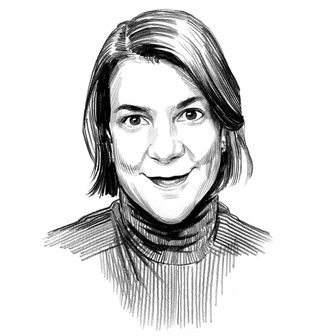
Follow Me is a weeklong series about personal brands, for better or for worse.
Mae Karwowski is the CEO and founder of Obvious.ly, an agency that works as a matchmaker between influencers and big brands like Coca-Cola, Uniqlo, and Saks Fifth Avenue. Put simply, she brokers deals for influencers to make money and get free stuff in exchange for posting about certain products. But you don’t have to have a ton of followers to get on her radar — in fact, she says, Obvious.ly works with influencers with fewer than 10K followers all the time. Here, she talks about the latest influencer trends (“it’s a great time to be an old lady on Instagram”) and what makes you “attractive” to brands.
1. Your posts don’t have to be pretty to be popular.
A lot of successful influencers have a very curated Instagram aesthetic. But there’s also a trend away from that now, toward content that seems more raw, and isn’t necessarily beautiful and polished. I might think it looks super unfiltered and find it unappealing, but that doesn’t matter. That’s what their audience really likes. Some people have this intangible quality that resonates. It’s not like we, as an agency, are a boy-band machine who can transform people into stars. Getting scouted used to be like, “Hey, this gatekeeper found me at the mall and told me that I have a certain look that’s a good fit for this project, and now I’m the chosen person.” We do the complete opposite of that.
Brands are still getting used to this. It’s hard for some companies to give up control of their image. It’s not like doing a commercial or buying ad space in a magazine. But if the data shows that an influencer has impact, they are starting to come around.
2. Don’t focus so much on your follower number. The comments matter a lot.
When we look at influencers we want to work with, we don’t just want a ton of followers. We also look at their engagement — what’s going on in the comments. And that goes beyond numbers too, or “engagement rates” in industry parlance. We look at what people are actually saying. Are they having conversations about the content — like, “Oh my god, I love that restaurant too! Order the chicken!” — or is it just a billion emojis? Do the followers really seem to care about the specifics of what you’re posting? That makes you more attractive to brands who are going after that audience, because it shows that your followers are paying close attention. Right now, we’re often finding that having 7K or 8K followers is a sweet spot for an influencer to be in, if their audience is engaged. Technically, they’re only a nano-influencer, but from a marketing perspective they can be really valuable.
3. Find your people. The more niche and weird, the better.
A few years ago it was just like, “Give me the person with the largest following. I don’t care if all their followers live in Asia and I’m a New York–based retailer.” Brands were spending lots of money on audiences that were totally wrong for them. Now we have better algorithms that helps brands be more targeted and specific, and it changes what they’re looking for.
We built technology that looks at influencers’ audiences and can tell the demographics of their followers. So the composition of your audience is important. Say you have 4,000 followers, you live in Miami, and you often post about wakeboarding. We can tell if 50 percent of your followers also live in Florida and like your wakeboarding posts. And if our client is a company that wants to reach young people who go to the beach a lot, they’ll be happy to work with you even though you only have 4,000 followers. It’s a little bit counterintuitive, because a lot of people think that being very niche limits your following. But from a brand’s perspective, it can be an advantage.
4. It helps to rub elbows with other influencers like yourself.
There can be real benefits to influencers getting together. It often happens with, say, fashion influencers, because they’re always hanging out at the same brand events. If you take a picture with three other influencers and then tag them, you might gain followers from them. For some types of influencers, there’s a whole community that’s really tight. They’ll date each other because they’re always going to the same parties. There are even drama accounts that follow their relationships. It’s like reality TV, but on social media, and their audience is really engaged, so they’re appealing from a marketing perspective.
5. But also: It helps to be someone other influencers aren’t. For instance, a man. Or an older lady.
Ironically, there’s still a gender wage gap with influencers, but it’s because there are a lot fewer male influencers than female influencers. So men — especially very “manly” influencers — are more in demand because they’re rare. It’s also a good time to be an older influencer. A lot of older women are really popular on Instagram, and that’s definitely a trend. If you’re a young female trying to become a fashion influencer, it’s going to be an uphill battle because that space is so saturated. But if you create content about things like personal finance, you’ll be in high demand because there are fewer people who do that. You want to look for holes in the market.
6. Prepare to put in a lot of time, and be flexible.
People will be like, “Can you make me an influencer?” And I’m like, “You can make yourself an influencer!” You just need to put in the work. It can take a ton of time and consistency. But the cool thing is that you don’t need anyone else to do it. Most influencers with under 75K followers don’t even have managers or staff — you don’t really need a team until you start getting big contracts.
The great thing about influencer marketing is that it’s an amorphous thing, because social media platforms are changing so quickly and influencers are also changing quickly in terms of their own brands and price points. Everyone’s always testing new ideas. And it means that anyone can blow up at any moment.





